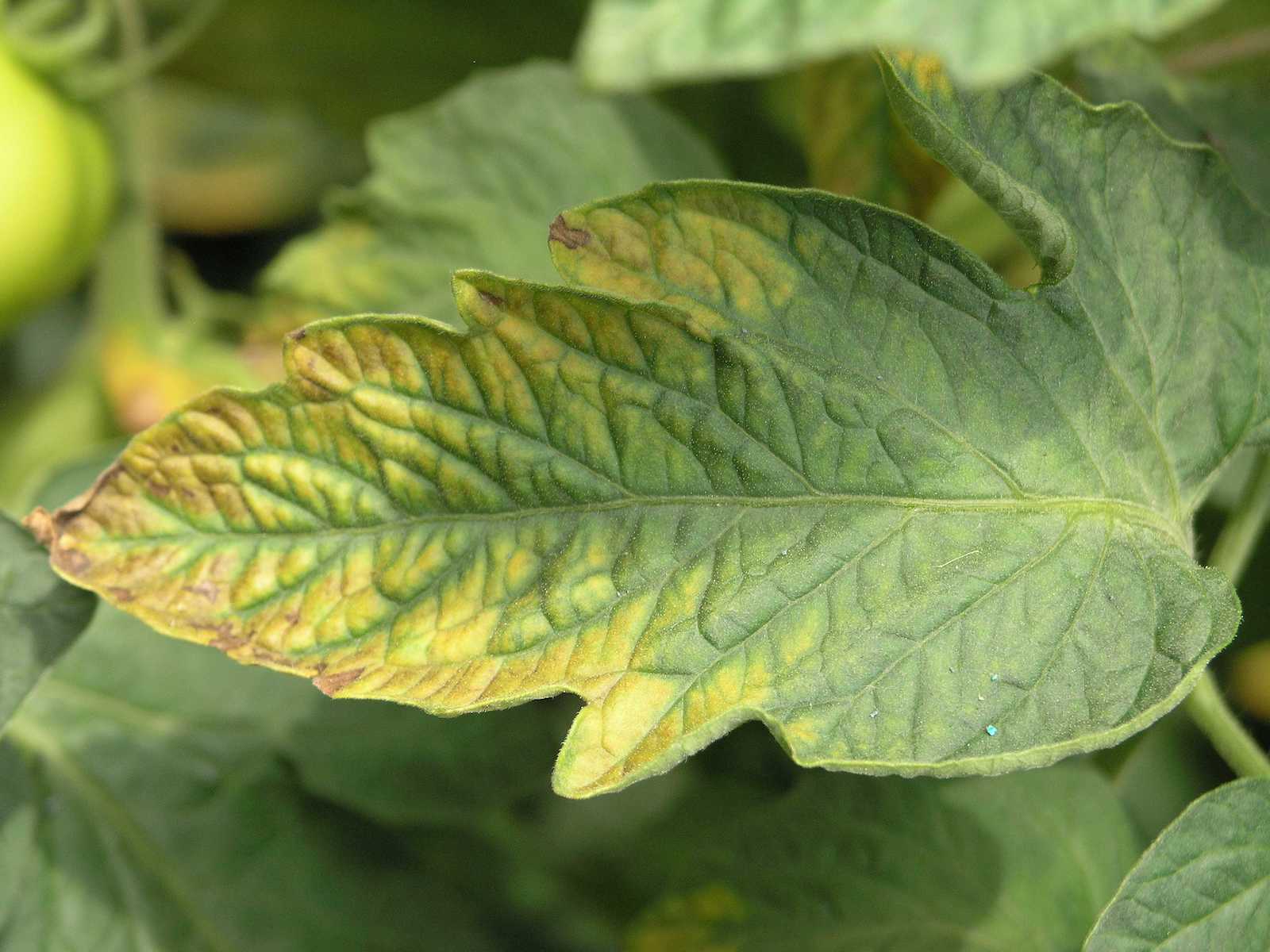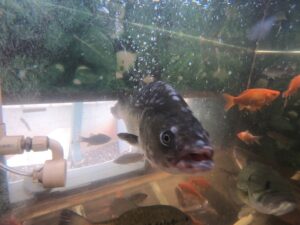Potassium deficiency is a common issue in aquaponic systems as there is typically a lack of adequate potassium in aquaponics systems. It can negatively impact plant health and productivity. Potassium plays a vital role in maintaining a balanced pH level in the system, too low of potassium levels can contribute to pH becoming imbalanced, which can disrupt nutrient availability and compromise the health of both plants and fish.
How to Identify a Potassium Deficiency
The symptoms of potassium deficiency in plants are observable and can vary depending on the plant species. Visual symptoms to look out for include:
- Chlorosis – The leaves may exhibit yellowing or whitening, usually starting from the leaf margins and progressing inward while leaving the veins green.
- Necrosis – Brown or dry patches may appear on the leaf edges or tips,
indicating cell death. - Leaf curling – Leaves may curl or exhibit abnormal growth patterns, especially at the leaf margins.
- Stunted growth – Plants suffering from potassium deficiency often exhibit slow growth and smaller overall size than healthy plants.
- Purple spots – Purple spots may appear on the underside of the leaf.
- Weak stems – Insufficient potassium can weaken plant cell walls, leading to weak stems that are more prone to bending or breaking.
It is important to know that these symptoms may indicate other nutrient deficiencies such as iron deficiency (P.18), or other environmental factors. A more accurate method would be to conduct a nutrient test or by analyzing water parameters, which can provide valuable information to diagnose potassium deficiency further and confirm its presence in an aquaponics system. Here are some tests to consider:
- Plant tissue analysis – Collecting plant samples and conducting a nutrient
analysis can reveal the potassium levels within the plant tissues. Laboratories or testing kits can provide accurate results. - Water testing – Analyzing water samples for potassium levels can help identify deficiencies. Specific kits or professional testing services can measure the potassium concentration in the system’s water.
How to Treat Potassium Deficiency
Method 1: Select a fish food that has a higher potassium content.
Method 2: Adding organic additives such as worm castings, compost, or vermicompost
to the grow beds can help the potassium content in the water
Method 3: Spray foliar sprays and nutrient solutions rich in potassium directly to the plant’s leaves to boost this essential nutrient immediately. Potassium-rich foliar sprays or nutrient solutions are commercially available or prepared using potassium-rich organic sources. Regularly applying these solutions can help alleviate potassium deficiency symptoms and promote healthy plant growth.
Method 4: Adding seaweed extract alternative or other alternative sources can be
utilized to supplement potassium levels in the aquaponics system. Seaweed extracts are rich in potassium and can be added to the system either directly or as a foliar spray. However, it is crucial to exercise caution and not exceed the recommended
application rates to prevent any adverse effects on the system.
How to Prevent Potassium Deficiency
- Regularly testing nutrient levels in the system – Periodically testing nutrients in the system, will help to identify potential deficiencies. It is important to balance the nutrients. Testing can be done using water samples or plant tissue analysis. Which will help Identifying nutrient imbalances early on, so that proactive measures can be taken to prevent potassium deficiency and maintain optimal nutrient levels.
- Ensure proper fish-to-plant ratio – Maintaining a proper fish-to-plant ratio is crucial for preventing potassium deficiency. Fish waste serves as a source of nutrients, including potassium, for the plants. It is important to balance between the number of fish and the number of plants. An imbalanced ratio can lead to excessive or insufficient nutrient availability.
- Monitoring and maintaining water quality parameters – Monitoring the pH level, dissolved oxygen (DO) content, and water temperature is crucial for the quality of the water, and is essential in preventing potassium deficiency. Poor water quality can negatively affect nutrient uptake and availability, including potassium. Maintaining optimal ranges for these parameters ensures that the plants can efficiently absorb potassium and other essential nutrients.
- Monitoring plant health and growth – It is important to closely monitoring plant health and growth to detect early signs of potassium deficiency. Regularly inspect plants for chlorosis, necrosis, stunted growth, or abnormal leaf curling, to identify nutrient imbalances. Prompt detection allows for timely intervention and adjustment of nutrient management practices.
- Implementing a scheduled feeding diet for fish – Implementing a scheduled well-rounded balanced diet for the fish to help prevent potassium deficiency. A balanced diet for the fish ensures they receive adequate nutrients, including potassium, which will be released into the system through their waste.




